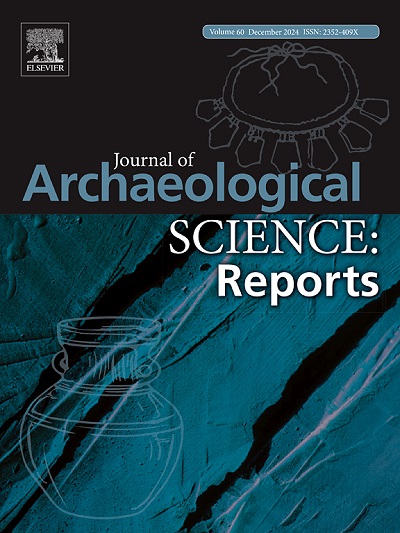Landscapes of (dis)connection: Modelling connectivity in west Samos with least cost path analysis
IF 1.5
2区 历史学
0 ARCHAEOLOGY
引用次数: 0
Abstract
This study explores connectivity in west Samos, an island whose landscape was defined by steep topography and which was largely inaccessibly by sea in the winter months. The first part of this paper reviews bibliographic, cartographic, ethnographic and archaeological evidence for terrestrial connectivity, while the second applies least cost path analysis to investigate possible routes between five key sites in southwest Samos to five key sites in the northwest. The GIS-rendered routes are compared to the field data to further explore the finer details of pathfinding and environment. All data types indicate the importance of route-making along two major river courses, the Megalo Rema and the Fourniotiko. Early Modern travelogues, ethnographic interviews, and maps all highlight the importance of seasonal waterways for cutting through areas of steep slope gradient. Both in exploratory hikes taken by the author and in GIS modelling, the Megalo Rema is deemed to be the more effective waterway for connecting south to north, while the construction of the island’s modern road network largely deviates from the calculated least cost routes. Anisotropic modelling is also employed to estimate travel times along the least cost paths. It is suggested that a return journey by foot or donkey is possible between the two sides of the island in one day, but that travel by loaded cart would have been impractical in most situations. These findings contribute to broader debates on island connectivity in the Aegean, emphasising the role of terrestrial pathways in supplementing maritime networks.
(非)连接的景观:用最小成本路径分析对西萨摩斯的连接进行建模
本研究探讨了西萨摩斯岛的连通性,西萨摩斯岛的景观由陡峭的地形所决定,在冬季的几个月里,海上交通基本上无法到达。本文的第一部分回顾了地面连接的书目、地图、民族志和考古证据,而第二部分应用最低成本路径分析来调查萨摩斯西南部五个关键地点到西北部五个关键地点之间的可能路线。将gis渲染的路线与现场数据进行比较,以进一步探索寻路和环境的更精细细节。所有类型的数据都表明,沿着两条主要河流——迈加洛河和富尔尼奥提科河——划定路线的重要性。近代早期的游记、人种学访谈和地图都强调了季节性水道在穿越陡坡区的重要性。在笔者的探险远足和GIS建模中,Megalo Rema被认为是连接南北的更有效的水道,而岛上现代道路网络的建设在很大程度上偏离了计算出的最低成本路线。各向异性模型也被用来估计沿最低成本路径的旅行时间。有人建议,在一天内步行或骑驴往返于岛的两边是可能的,但在大多数情况下,乘坐满载的马车旅行是不切实际的。这些发现有助于对爱琴海岛屿连通性进行更广泛的讨论,强调陆地通道在补充海上网络中的作用。
本文章由计算机程序翻译,如有差异,请以英文原文为准。
求助全文
约1分钟内获得全文
求助全文
来源期刊

Journal of Archaeological Science-Reports
ARCHAEOLOGY-
CiteScore
3.10
自引率
12.50%
发文量
405
期刊介绍:
Journal of Archaeological Science: Reports is aimed at archaeologists and scientists engaged with the application of scientific techniques and methodologies to all areas of archaeology. The journal focuses on the results of the application of scientific methods to archaeological problems and debates. It will provide a forum for reviews and scientific debate of issues in scientific archaeology and their impact in the wider subject. Journal of Archaeological Science: Reports will publish papers of excellent archaeological science, with regional or wider interest. This will include case studies, reviews and short papers where an established scientific technique sheds light on archaeological questions and debates.
 求助内容:
求助内容: 应助结果提醒方式:
应助结果提醒方式:


